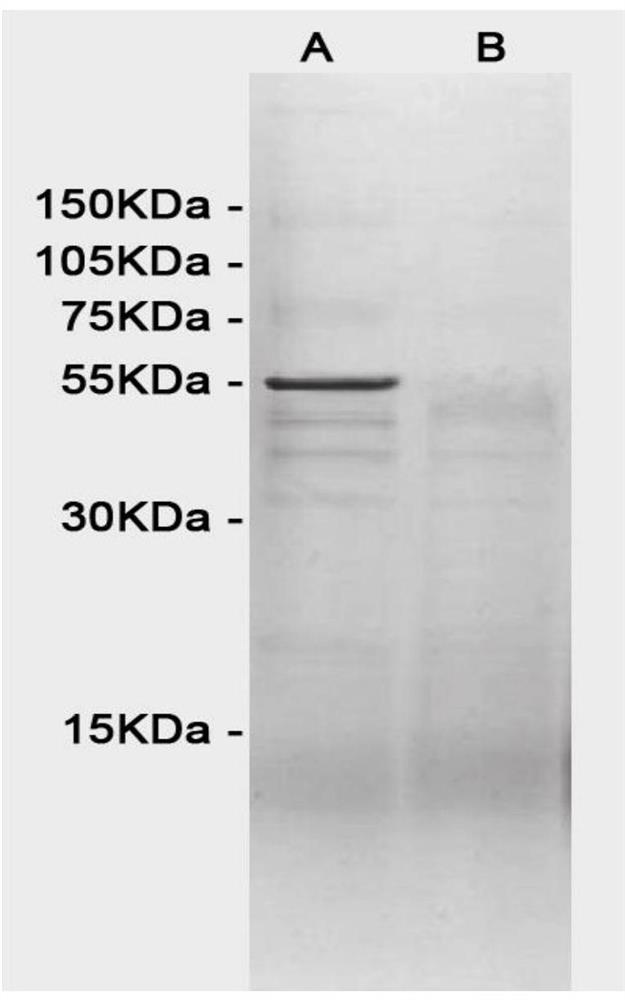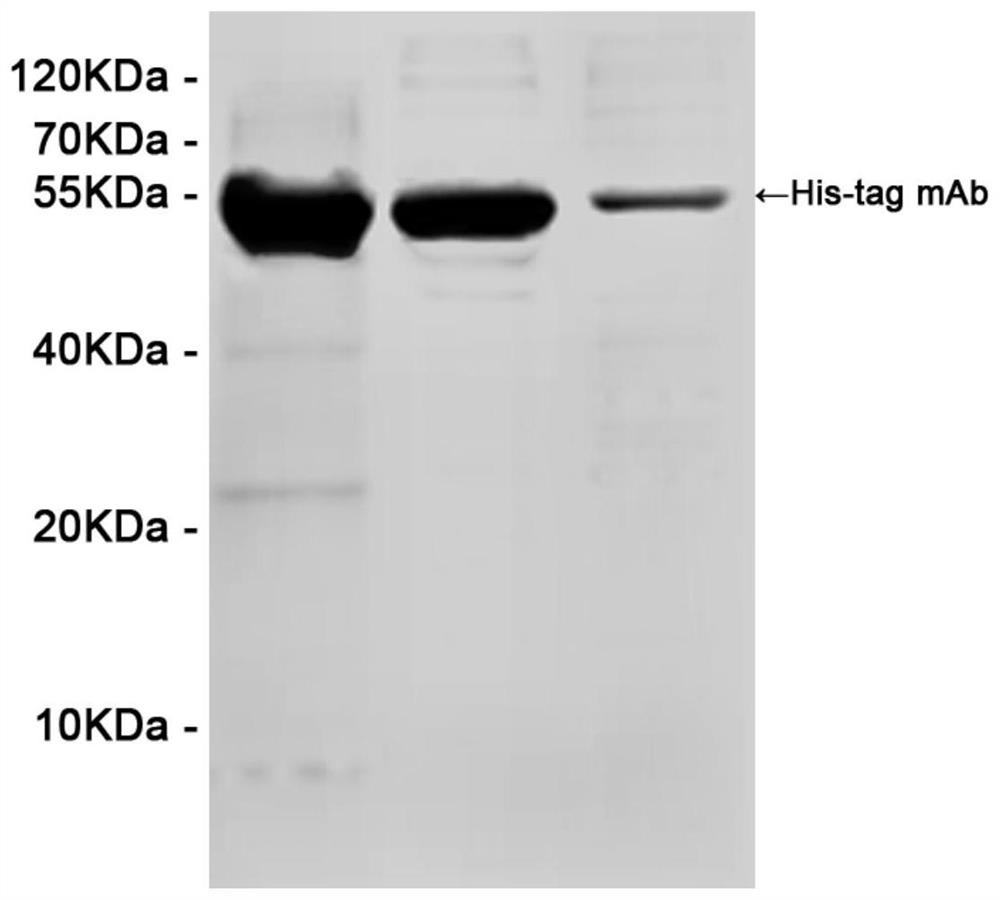Milk, wheat, peanut and soybean allergen fused protein and construction method and application thereof
A soybean allergen and fusion protein technology, which is applied in the field of wheat, milk, peanut and soybean allergen fusion protein and its construction, can solve the problems of single protein, missed detection and wrong detection, poor sensitivity and specificity, etc., to reduce pain , Reduce missed detection and false detection, and improve the detection rate
- Summary
- Abstract
- Description
- Claims
- Application Information
AI Technical Summary
Problems solved by technology
Method used
Image
Examples
Embodiment 1
[0035] Synthesis of fusion gene (target gene):
[0036] The amino acid sequence of milk protein is selected as follows:
[0037] EEIVNSVEQKHIQKEDVPSERYLGYLEQLLRLKKYKVPQLEIVNSAEERLGGGGSEI NQFYQKFPQYLQYLYGGGGSTEVFTKKTKLTEEEKNRLNFLKKISQRYQKFALPQYLKTV Y QHQKAMKPWI QPKT.
[0038] The amino acid sequence of wheat protein is selected as follows:
[0039] YSVRFVANHGGGGSVLKNKHREWESCFQKQ.
[0040] Peanut protein selects the following amino acid sequence:
[0041] SATHAKSSPYQKKTENPCAQRCLQSCQQEPDDLKQKACESRCTKLEYDPRCVYDPRGHTGTTNQRSPPGERTRGRQPGGGGGSRRYTARLKEGGGGGSLAAHASARQQWELQGDRRCQSQ LERANLRPCE QHLMQKIQRD.
[0042] The amino acid sequence of soybean protein is selected as follows:
[0043] MGVFTFEDEINSPVAPATLYKALVTDADNVIPKALDSFKSVENVEGNGGPGTIKKITFLEDGETKFVLHKIESIDEANLGYSYSVVGGAALPDTAEKITFDSKLVAGPNGGSAGKLTVKYETKGDAEPNQDELKTGKAKADALFKAIEAY LLahPDYN.
[0044] S1. Sequentially connect the nucleotide sequences of milk, wheat, peanut and soybean allergens to obtain the target gene. Accordi...
Embodiment 2
[0046] Construction of recombinant plasmids containing fusion genes:
[0047] 2.1 Combine the fully synthetic sequence obtained in Example 1 with the vector pFastBac double-digested with restriction endonucleases BamH I and Not I TM HT A to connect;
[0048] 2.2 Transform the ligation product into Escherichia coli DH5α competent cells. The volume of the ligation product should not exceed 10% of the competent cells. Gently swirl several times to mix the contents, put it in an ice bath for 30 minutes, put it in a 42°C water bath and heat it for 60 seconds at regular intervals. Shock, quickly transfer the tube to an ice bath for 120 seconds, add 400 μL LB medium to each tube, shake slowly at 37°C for 60 minutes, centrifuge at low speed for 2 minutes, remove the supernatant, leave 100 μL medium in the centrifuge tube, resuspend the bacteria, and Spread the bacterial solution evenly on the LB plate;
[0049] 2.3 Place the plate upside down in a constant temperature incubator at 3...
Embodiment 3
[0051] Expression of fusion protein
[0052]3.1 Transform the recombinant plasmid obtained in Example 2 into DH10 Bac competent cells, the volume should not exceed 5% of the competent cells, gently swirl several times to mix the contents, and put the tube in ice bath for 30 minutes; put the tube in 42°C Timed heat shock in water bath for 90 seconds; quickly transfer the tube to ice bath for 120 seconds; add 800 μL LB medium to each tube, 37 ° C, shake slowly for 4 hours; spread 30 μL bacterial solution on the resistance agar plate; put the plate upside down In a constant temperature incubator at 37°C, blue-white colonies may appear after 30-48 hours;
[0053] 3.2 Pick a single positive white spot colony and inoculate it into 5mL of resistant LB culture medium, shake slowly for 12-16h, take the bacterial solution for PCR identification, and the results show that the bacmid recombination is correct. The recombinant bacmid is transfected into insect cells with a transfection rea...
PUM
 Login to View More
Login to View More Abstract
Description
Claims
Application Information
 Login to View More
Login to View More - R&D
- Intellectual Property
- Life Sciences
- Materials
- Tech Scout
- Unparalleled Data Quality
- Higher Quality Content
- 60% Fewer Hallucinations
Browse by: Latest US Patents, China's latest patents, Technical Efficacy Thesaurus, Application Domain, Technology Topic, Popular Technical Reports.
© 2025 PatSnap. All rights reserved.Legal|Privacy policy|Modern Slavery Act Transparency Statement|Sitemap|About US| Contact US: help@patsnap.com



